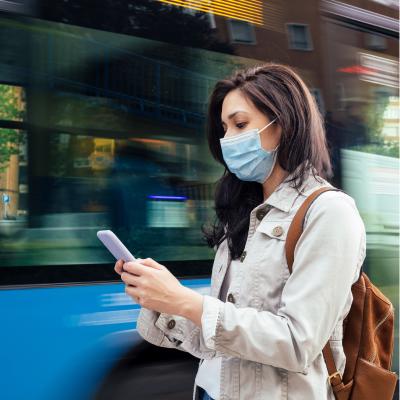What Will Public Transit Look Like After Covid-19?

Before the current pandemic, public transit organizations did not have a great incentive to focus on the experience of their customers. After all, transit authorities generally have exclusive rights to serve a specific urban region or center, and people without a car usually have no choice but to use their services. This is regardless of whether the buses or trains tend to run late or break down, are less than ideally clean, or otherwise provide a suboptimal experience.
Things Have Changed in a Big Way
The COVID-19 crisis caused the almost unimaginable to happen - almost no customers. Prime examples are San Francisco and New York City. The latter saw its ridership levels on subways and commuter rail services reduced by as much as 90 percent. Although ridership has increased since COVID restrictions have been eased, the numbers are still way below normal.
How Can People Be Convinced to Return to Public Transit?
The COVID-19 pandemic has created huge problems for transit organizations. However, it has also provided an unexpected opportunity for them to rethink their operations and embrace new approaches and technologies. They do have the ability to create a better customer experience and come out of the crisis stronger than before.
The Importance of Data
Transit agencies should begin their reassessment of the way they operate by making better use of data. This will enable them to address the primary concerns of their ridership, so that customers will feel comfortable riding on public transportation once again.
• Example: A bus rider might be reluctant to hop on a crowded bus, but what if the rider could be informed that the next bus was only half full.
• Example: If a bus agency kept track on how full buses were on a particular route, they could make adjustments in real time by increasing the frequency of buses.
New Technology Is Necessary
Gathering essential data requires new ticketing systems that are primarily digital, e.g., online tickets or apps on mobile devices. These digital platforms are the key to understanding the flow of people and ridership patterns so that informed decisions can be made to enhance the experience of the traveling public. Digital ticketing will provide a safer ticket-buying experience for customers who can avoid waiting in long lines, visiting crowded ticket offices, or having to touch ticket-vending machine screens.
Final Thoughts
Transit agencies need to begin providing a much different kind of experience if they hope to win back customers. The COVID-19 crisis will eventually be over, but customer expectations will have been permanently altered. Therefore, the need to make intelligent use of data will persist long after the virus has dissipated. Those transit operators who can successfully use data to guide their operations will be able to attract ridership and keep public transportation operating successfully.
